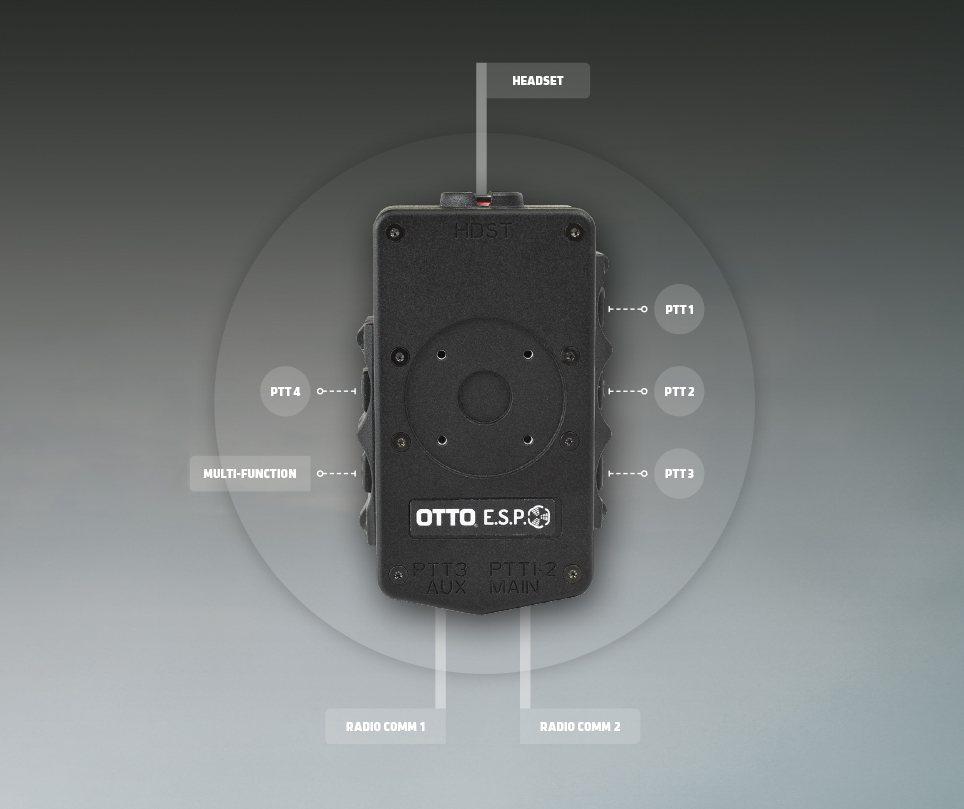OTTO’s spatial positioning technology provides clarity amid the chaos of battle.
Mo Nazir is several years removed from his multiple tours in Iraq and Afghanistan. But combat has a way of burning memories into the forefront of a soldier’s mind.
“What’s crazy is I can still feel my way through a lot of those memories. It’s still fresh,” said Nazir, an Army veteran who led combat operations as an NCO in the Airborne and Military Police communities.
“It’s hard to explain the stress involved in trying to control a battlespace. You’re not only scanning your sector or directing rounds down range, but you’re receiving communication from several sources, all at once,” Nazir said. “Your headset becomes this circus of voices, all tripping over each other to gain your attention.”
Audiologists have a term for the experience Nazir describes: cognitive overload. As the streams of voices increase, one’s ability to discern and act on that information plummets. Coupled with the other stressors of battle, it can prove maddening.
“Frankly, we’re just not built for it,” Nazir said. “But lives are at stake. Your soldiers and mission are the priority, so you try and figure it out.”
From Chaos to Cocktails
Traditional tactical headsets rely on binaural communication, meaning the listener hears incoming voices simultaneously in both ears. Combat controllers, then, are regularly exposed to an overlapping chorus of information, with no cues to help segregate the voices. Amid the stress of combat, decision-making can border on the impossible.
“In a normal environment, humans use outside prompts to separate and discern the importance of competing voices,” said Dan Stanek, Vice President & General Manager of the Communications business unit at OTTO Engineering, a leading manufacturer of tactical audio technology.
“Most of us have heard of the ‘cocktail party effect,’ the idea being that even in a multi-talker environment, like a cocktail party, we can zero in on important information because we’re able to assign voices to people based on where they’re located. With E.S.P., we’re translating that effect to the battlefield.”
OTTO’s Enhanced Spatial Positioning Push-to-Talk, or E.S.P. PTT, is a game changer in tactical communication. Rather than hearing incoming voices as overlapping streams in both ears, each voice is heard in a distinct location around the user’s head. An Air Force A-10 pilot, for instance, might be assigned to the back right quadrant, while several forward operators on the ground are assigned to their own distinct quadrants. In essence, each voice has its own lane.

“The user quickly learns to recognize the source of information based on its location in their headset, even if there are multiple streams pouring in,” said Stanek. “It’s like listening in 3D.”
By untangling and segregating voices within the headset of the listener, OTTO’s E.S.P. PTT dramatically reduces cognitive load compared to traditional communication devices. Operators experience significant improvements in information retention and reduction in listener fatigue.
“Researchers call it stream segregation, but what we’re really talking about is gaining clarity amid the chaos of battle,” said Stanek. “Situational awareness is everything to a combat controller. When you remove the risk of audio overload, the operator can laser focus on the information that matters most. Its impact on swift, effective decision-making is remarkable.”
Leaders in Spatial Audio Technology
Several recent studies confirm that spatial audio positioning addresses several of the challenges posed by dynamic tactical environments. 3D listening, researchers have learned, ensures improved recognition and discernment. Its application to the battlefield—and beyond—is apparent.
“This is the first and only 3D spatial audio device designed specifically for dismounted operators in tactical environments,” said Stanek. “But really, the E.S.P. PTT represents OTTO’s broader commitment to research and engineering centered on spatial audio technology. We believe 3D audio represents a seismic shift in the future of communication.”
Using detachable cables for each radio type, the E.S.P. PTT is compatible with major radio platforms and vehicle and airborne intercoms, making for seamless integration into joint force battlespaces, where interoperability is essential.
“At the end of the day, we want to empower operators—whatever their environment—to clearly hear critical messages and quickly make decisions that can save lives and accomplish the mission,” said Stanek. “We’re convinced spatial audio technology is a key that unlocks that goal.”
Product Link: https://www.otto-comm.com/products/push-to-talk-options/enhanced-spatial-positioning-push-to-talk
Company Link: https://www.otto-comm.com/














